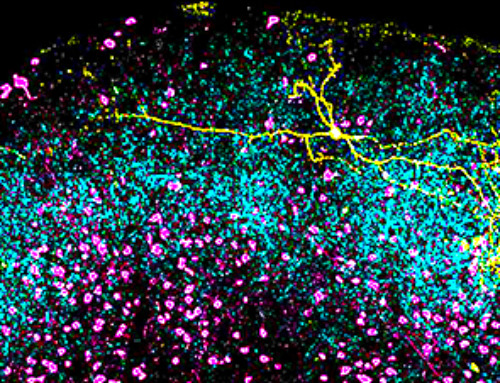Researchers have developed an innovative and versatile system designed for a new generation of short-pulse lasers.
Lasers that produce extremely short bursts of light are known for their remarkable precision, making them indispensable tools in manufacturing, medical technology, and scientific research. However, creating short-pulse lasers that are both powerful and efficient typically requires large, complex, and costly setups.
A research team at the University of Stuttgart, working in collaboration with Stuttgart Instruments GmbH, has now overcome this challenge. Their newly developed laser system is more than twice as efficient as existing designs, small enough to fit in the palm of a hand, and adaptable for a variety of uses. Details of their innovation have been published in the journal Nature.
Eighty percent efficiency is possible
“With our new system, we can achieve levels of efficiency that were previously almost unattainable,” says Prof. Harald Giessen, Head of the 4th Physics Institute at the University of Stuttgart.
In their experiments, the researchers showed that it is fundamentally possible to reach an 80% efficiency rate with a short-pulse laser. In practical terms, this means that 80% of the energy supplied to the system can be effectively utilized.
“For comparison: current technologies achieve only about 35%—which means they lose much of their efficiency and are correspondingly expensive,” explains Giessen.
A lot of energy in an extremely short time
Short-pulse lasers emit bursts of light lasting only nano-, pico-, or femtoseconds (i.e., a few billionths to quadrillionths of a second). This capability enables them to deliver immense energy to a very small area in an incredibly brief period.
The process involves two lasers working in tandem: a pump laser and the short-pulse laser. The pump laser channels light energy into a special crystal that forms the core of the system. This crystal transfers energy from the pump laser to an ultrashort signal pulse, converting the incoming light particles into infrared light.
The result is a tool that can perform experiments, measurements, and production tasks not possible with visible light. In manufacturing, these lasers are used for ultra-precise and delicate material processing. In medicine, they enable advanced imaging techniques, while in quantum research, they allow scientists to conduct exceptionally precise measurements at the molecular scale.
Synchronize laser amplification and bandwidth
“Designing short-pulse lasers efficiently remains an unsolved challenge,” explains Dr. Tobias Steinle, lead author of the study. “In order to generate short pulses, we need to amplify the incoming light beam and cover a wide range of wavelengths.” Until now, it has not been possible to combine both properties simultaneously in a small and compact optical system.”
Laser amplifiers with a wide bandwidth require special crystals that are particularly short and thin. Efficient amplifiers, on the other hand, require especially long crystals. Connecting several short crystals in series is one possible way to combine both. It is already being pursued in research. The key is to ensure that the pulses from the pump laser and the signal laser remain synchronized.
New multipass concept
Researchers have now solved this problem with a new multipass procedure. Instead of using a single long crystal or many short crystals, they use a single short crystal and repeatedly run the light pulses through this crystal in their optical parametric amplifier.
Between two passes through the crystal, the separated pulses are precisely realigned so that they remain synchronized. The system can generate pulses shorter than 50 femtoseconds, occupies only a few square centimeters, and consists of just five components.
Highly versatile
“Our multipass system demonstrates that extremely high efficiencies need not to come at the expense of bandwidth,” explains Steinle. “It can replace large and expensive laser systems with high power losses, which were previously required to amplify ultrashort pulses.”
The new system is highly versatile and can be adapted to other wavelength ranges beyond infrared light as well as to different crystal systems and pulse durations. With this concept, the researchers aim to build small, lightweight, compact, portable, and tunable lasers capable of precisely adjusting wavelengths. They see potential areas of application in medicine, analytics, gas sensor technology, and environmental research.
Reference: “Dispersion-engineered multipass optical parametric amplification” by Jan H. Nägele, Tobias Steinle, Johann Thannheimer, Philipp Flad and Harald Giessen, 5 November 2025, Nature.
DOI: 10.1038/s41586-025-09665-w
The study was supported by the Federal Ministry of Research, Technology and Space (BMFTR) as part of the KMU-Innovativ funding line, the Federal Ministry for Economic Affairs and Energy (BMWE), the Baden-Wuerttemberg Ministry of Science, Research and the Arts, the German Research Foundation (DFG), the Carl Zeiss Foundation, the Baden-Wuerttemberg Foundation, the Center for Integrated Quantum Science and Technology (IQST), and the Innovation Campus Mobility of the Future (ICM). It was carried out by the 4th Physics Institute of the University of Stuttgart in cooperation with Stuttgart Instruments GmbH as part of the MIRESWEEP project (a novel, cost-effective tunable mid-infrared laser source for analytical applications).
News
How a Palm-Sized Laser Could Change Medicine and Manufacturing
Researchers have developed an innovative and versatile system designed for a new generation of short-pulse lasers. Lasers that produce extremely short bursts of light are known for their remarkable precision, making them indispensable tools [...]
New nanoparticles stimulate the immune system to attack ovarian tumors
Cancer immunotherapy, which uses drugs that stimulate the body’s immune cells to attack tumors, is a promising approach to treating many types of cancer. However, it doesn’t work well for some tumors, including ovarian [...]
New Drug Kills Cancer 20,000x More Effectively With No Detectable Side Effects
By restructuring a common chemotherapy drug, scientists increased its potency by 20,000 times. In a significant step forward for cancer therapy, researchers at Northwestern University have redesigned the molecular structure of a well-known chemotherapy drug, greatly [...]
Lipid nanoparticles discovered that can deliver mRNA directly into heart muscle cells
Cardiovascular disease continues to be the leading cause of death worldwide. But advances in heart-failure therapeutics have stalled, largely due to the difficulty of delivering treatments at the cellular level. Now, a UC Berkeley-led [...]
The basic mechanisms of visual attention emerged over 500 million years ago, study suggests
The brain does not need its sophisticated cortex to interpret the visual world. A new study published in PLOS Biology demonstrates that a much older structure, the superior colliculus, contains the necessary circuitry to perform the [...]
AI Is Overheating. This New Technology Could Be the Fix
Engineers have developed a passive evaporative cooling membrane that dramatically improves heat removal for electronics and data centers Engineers at the University of California San Diego have created an innovative cooling system designed to greatly enhance [...]
New nanomedicine wipes out leukemia in animal study
In a promising advance for cancer treatment, Northwestern University scientists have re-engineered the molecular structure of a common chemotherapy drug, making it dramatically more soluble and effective and less toxic. In the new study, [...]
Mystery Solved: Scientists Find Cause for Unexplained, Deadly Diseases
A study reveals that a protein called RPA is essential for maintaining chromosome stability by stimulating telomerase. New findings from the University of Wisconsin-Madison suggest that problems with a key protein that helps preserve chromosome stability [...]
Nanotech Blocks Infection and Speed Up Chronic Wound Recovery
A new nanotech-based formulation using quercetin and omega-3 fatty acids shows promise in halting bacterial biofilms and boosting skin cell repair. Scientists have developed a nanotechnology-based treatment to fight bacterial biofilms in wound infections. The [...]
Researchers propose five key questions for effective adoption of AI in clinical practice
While Artificial Intelligence (AI) can be a powerful tool that physicians can use to help diagnose their patients and has great potential to improve accuracy, efficiency and patient safety, it has its drawbacks. It [...]
Advancements and clinical translation of intelligent nanodrugs for breast cancer treatment
A comprehensive review in "Biofunct. Mater." meticulously details the most recent advancements and clinical translation of intelligent nanodrugs for breast cancer treatment. This paper presents an exhaustive overview of subtype-specific nanostrategies, the clinical benefits [...]
It’s Not “All in Your Head”: Scientists Develop Revolutionary Blood Test for Chronic Fatigue Syndrome
A 96% accurate blood test for ME/CFS could transform diagnosis and pave the way for future long COVID detection. Researchers from the University of East Anglia and Oxford Biodynamics have created a highly accurate [...]
How Far Can the Body Go? Scientists Find the Ultimate Limit of Human Endurance
Even the most elite endurance athletes can’t outrun biology. A new study finds that humans hit a metabolic ceiling at about 2.5 times their resting energy burn. When ultra-runners take on races that last [...]
World’s Rivers “Overdosing” on Human Antibiotics, Study Finds
Researchers estimate that approximately 8,500 tons of antibiotics enter river systems each year after passing through the human body and wastewater treatment processes. Rivers spanning millions of kilometers across the globe are contaminated with [...]
Yale Scientists Solve a Century-Old Brain Wave Mystery
Yale scientists traced gamma brain waves to thalamus-cortex interactions. The discovery could reveal how brain rhythms shape perception and disease. For more than a century, scientists have observed rhythmic waves of synchronized neuronal activity [...]
Can introducing peanuts early prevent allergies? Real-world data confirms it helps
New evidence from a large U.S. primary care network shows that early peanut introduction, endorsed in 2015 and 2017 guidelines, was followed by a marked decline in clinician-diagnosed peanut and overall food allergies among [...]




















